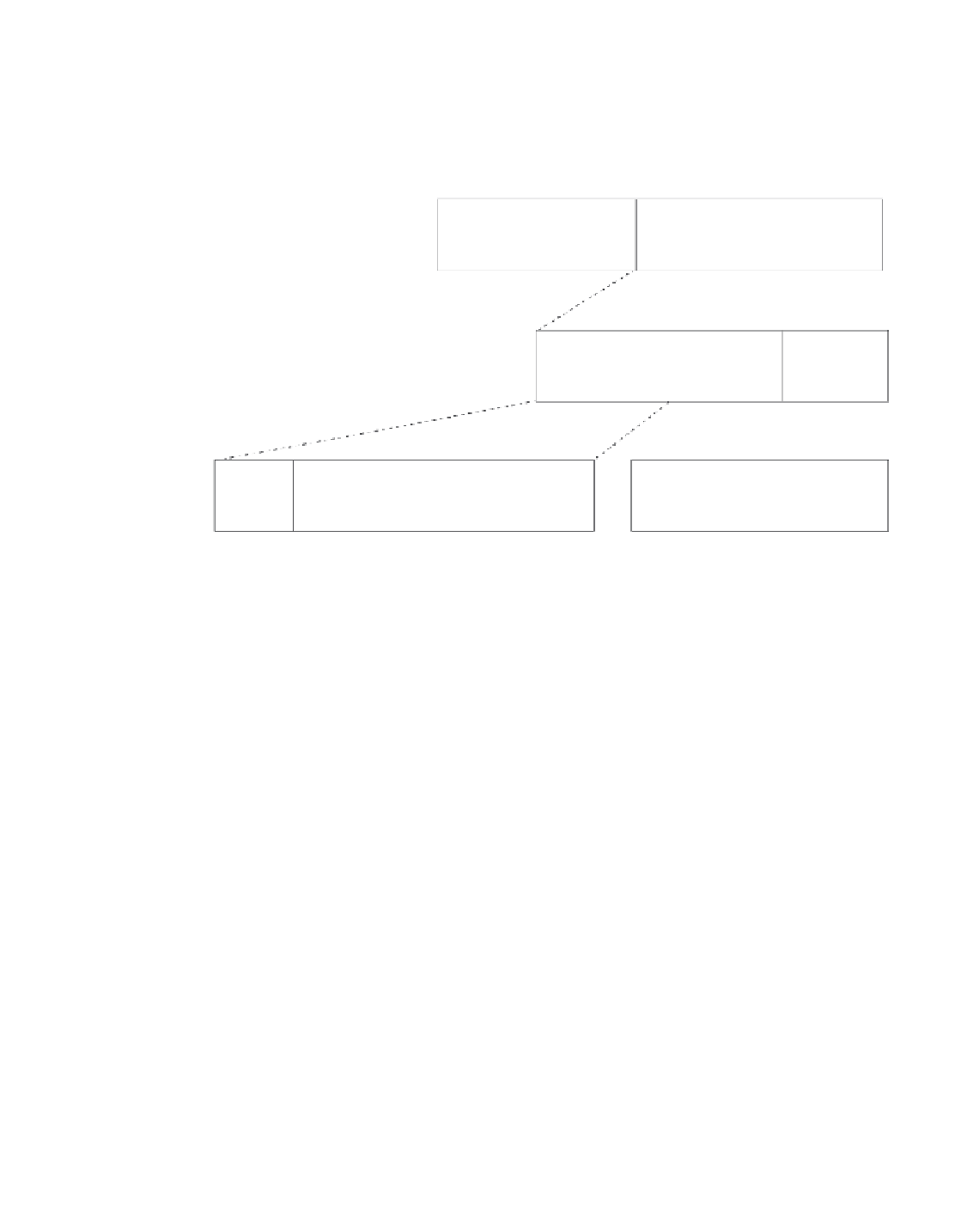Information Technology Reference
In-Depth Information
Frame Format
The IEEE 802.5 RIF is structured as shown in Figure 10-4.
Figure10-4 The IEEE 802.5 RIF
R
I
I
Destination
address
Source
address
802.5 MAC
frame
RIF
Data
FCS
Routing
control
Route
descriptor
Route
descriptor
Ring
number
Bridge
number
Type
Length
D
Largest
Not used
The fields of the RIF are as follows:
•
The Routing Control field, which consists of the following subfields:
-
The Type subfield in the RIF indicates whether the frame should be routed to a single node, a
group of nodes that make up a spanning tree of the internetwork, or all nodes. The first type is
called a specifically routed frame, the second type is called a spanning-tree explorer, and the
third type is called an all-paths explorer. The spanning-tree explorer can be used as a transit
mechanism for multicast frames. It can also be used as a replacement for the all-paths explorer
in outbound route queries. In this case, the destination responds with an all-paths explorer.
-
The Length subfield indicates the total length (in bytes) of the RIF.
-
The D bit indicates the direction of the frame (forward or reverse).
-
The largest field indicates the largest frame that can be handled along this route.
•
The Route Descriptor field, of which there can be more than one. Each route descriptor field carries
a ring number/bridge number pair that specifies a portion of a route. Routes, then, are simply
alternating sequences of LAN and bridge numbers that start and end with LAN numbers.
Troubleshooting IBM
This section focuses on connectivity and performance problems associated with bridging and routing in
IBM-based networks. This section covers specific IBM-related symptoms, the problems that are likely
to cause each symptom, and the solutions to those problems.
This section covers the most common network issues in IBM networks:
•
Local SRB: Host Cannot Connect to Server
•
Local RSRB: Routing Does Not Function
•
RSRB: Host Cannot Connect to Server (Peers Not Open)













